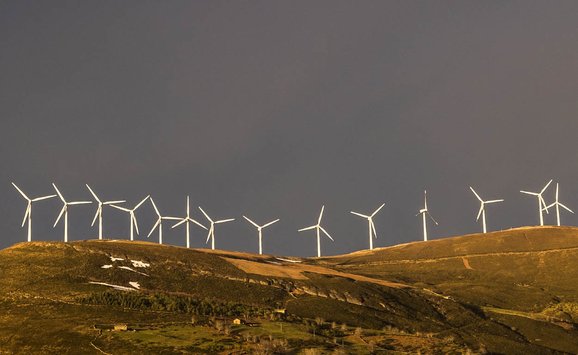It is always intriguing to speculate on how history will characterize a given year or period. Under the admittedly narrow aspect of energy, there is much to be said for believing that 1979 will be regarded as the year in which the energy problem ceased to be considered a figment of the imagination or the clever design of evil forces. That by the end of the year there could be serious discussion of the merits of a 50-cent tax on gasoline speaks loudly for this thesis. But that was not all. The year had offered a sobering list of troubles: the first Iranian crisis that ended in the overthrow of the Shah and a temporary interruption of oil supplies; the nuclear accident at Three Mile Island in late March; the gasoline lines in midsummer; the second Iranian crisis triggered by the seizure of hostages, an act that cut off oil deliveries to the United States; the near-doubling of OPEC's oil price over a twelve-month period in an increasingly chaotic world oil market; gasoline at the pump hitting a dollar a gallon; and, at the close of the year, a credible Soviet threat to Middle East oil resources in general. If, as a result of these events, there is now a more realistic perception of the problem, the chances of achieving some advances in energy policy should be greatly enhanced, though one's optimism must be tempered by awareness of what often happens to policy proposals along the way to the statute books.

Presidential responses. The swiftly moving events produced two major presidential interventions, the first in early April, which, among other things, laid down the basic objectives and procedures for domestic oil price decontrol, the windfall profits tax, and an Energy Security Fund to finance a large variety of policies on both the production and consumption sides. Three months later, the president announced a program aimed specifically at reducing oil imports so that “the country would never again import more oil than it did in 1977.” Moreover, the various measures proposed would cut oil import requirements in half by 1990. To achieve these goals the president called for a permanent oil import ceiling of “approximately 8.5 million barrels per day [mbd],” announced a drive to assure domestic production by 1990 of 2.5 mbd of “oil substitutes,” under the aegis of a yet-to-be-established Energy Security Corporation, proposed the establishment of an Energy Mobilization Board to assure the rapid progress of important energy projects, and proposed additional measures to soften the impact of price decontrol on those hardest hit, as well as miscellaneous aids to conservation.
Contrary to the experience with the President's National Energy Plan, on which the Congress spent all of 1977 and most of 1978, the new proposals seem to have fared better. Under the impact of the adverse developments mentioned above and perhaps worse to come, major legislative proposals are likely to obtain congressional approval in early 1980.
Most important, decontrol of domestic crude oil prices, begun on June 1, 1979, was in full swing as of January 1, 1980, and has withstood attempts to halt or reverse it. Barring the election in November of candidates who oppose de-control, the course now seems irreversibly set toward elimination of oil price control by September 1981. With it should disappear the entitlement and allocation system which in the past has diluted the full effect of the high world oil price and its demand-reducing impact.

Fallout from decontrol. Unfortunately, as of the end of 1979, decontrol was in the process of spinning a new web of regulatory and bureaucratic measures, designed to channel a portion of the revenues, consisting of the difference between controlled and decontrolled domestic oil prices, into the coffers of the federal government. Misnamed the windfall profits tax (rather than the domestic crude oil excise tax), this measure quickly triggered a lively and protracted numbers game.
Since the underlying philosophy fails to provide compelling reasons for taking away any particular fraction of the estimated higher revenues, imagination ranged from just above zero to just below 100 percent. On oil discovered through 1978, the House's take aimed lower than the Senate's, with the positions reversed on newly discovered oil. There were also differences on whether, how, and when the legislation would phase out (under the House version the tax would never terminate on pre-1979 oil) and on how the base price should be computed.
Finally, bitter differences emerged on how to treat the so-called independents (somehow equated with mom-and-pop corner groceries, despite the fact that the argument concerned the treatment of the first 1,000 barrels a day production, which will soon be worth upward of $20,000 a day, or some $7 million a year). Basically, these are the non-integrated producers, not hardship cases. The argument over their treatment tended to split the ranks of the petroleum producers; it was finally settled by treating the independents significantly better than the integrated companies, but not letting them slip entirely through the net. Congressional staff inventiveness won the day by suggesting that for the first six months a lower base price be adopted, thus raising taxable revenues and allowing the more lenient treatment of the independents.
The windfall profits tax is by all odds the most intriguing piece in the new legislative package. The numbers are enormous; the fact that such a large chunk of money is to be removed from the regular appropriations process is, to say the least, disconcerting; the idea that the tax might become permanent and that it would be levied on the excess over a stipulated “base price” (its level inflation factor also a matter of negotiation in Congress), to be raised by an annual inflation factor, represents an unwelcome legacy of price decontrol; that the revenues are broadly interpreted as being a new version of manna from heaven rather than the result of higher prices paid by consumers makes them appear as some kind of “funny money.”
In strict logic, a judgment that these potential revenues from oil yet to in the past are unearned should call for 100 percent confiscation; by the same logic, revenues from oil discovered in the past are unearned should call for 100 percent confiscation; by the same logic, revenues from oil yet to be discovered and presumably looked for in full anticipation of rising prices should be left wholly untaxed, lest intelligent and successful anticipation of the future profitability be penalized. Instead, when the congressional conferees had finally settled their differences it turned out that old oil is to be taxed at 70 percent and new oil at 30%. The resulting differences in total revenues between the original Senate and House versions, amounting to $99 billion, is to be split, with a resulting ten-year yield to the treasury or security fund of $227 billion. All this related only vaguely to the president's 1979 estimate of a $142 billion yield, of which $88 billion was to fund synfuels.
A separate portion of the bill deals with the disbursal of the tax revenues. Space does not permit a detailed accounting, but, as one might expect, the huge dollar tag on the revenues could not fail to whet the appetite of legislators. After all, in the context of an expected $227-billion income, what are a few hundred million dollars— tax credits or direct outlays—but a bare nibble.
Thus, the original bills included $1 billion for improved railroad services; new subsidies for the development of a large number of specified energy sources, from minihydro to alcohol; tax credits of up to $2,000 for residents installing passive solar heating; and deductions for oil producers of the cost of injectants in tertiary oil recovery. Yet another title set aside several billion dollars a year for relieving the high cost of home heating, up to $200 per person credit. And so it went right down to a proposed credit for converting gasoline-driven to an electricity-driven motor vehicle.
As the conferees neared agreement, many a legislator's pet project bit the dust. So did the president's April 1979 proposal to use the bulk of the revenue--then put at $144 billion—for synthetic fuel facilities. Instead, tax reduction became the heart of the program, followed by financial aid for the poor to help them foot their energy bills. The balance would go to tax credits for a limited number of conservation activities; for transportation improvement, and for energy development, mainly synfuels. Much of the detail is to be left for future determination, but one must, in any event, doubt that such a vast program can withstand the onslaught that changing circumstances and perceptions are bound to make on it in the next ten years.
It would take an enormous effort to judge the cost-effectiveness of these individual actions. Some subsidies might be too low, some too high, some wholly useless. Many will lend themselves to manipulation toward qualifying the producer or user. Government sleuths will be busy, so will lawyers and the courts; and much discredit will accrue to what might intrinsically seem good ideas. But that is the way the system works when the government is cast in the role of a vast dispenser of funds, especially when these funds carry the name of “windfall profits.”

Alternate energy sources. Even in an inflation-ridden economy these are highly extravagant games. Barring last minute insurmountable differences between House and Senate, this piece of legislation will have passed before basic decisions have been made on the exact nature of the largest intended beneficiary: the synfuels program. As matters stood at the end of 1979, $2.2 billion were available to finance feasibility studies and cooperative agreements, execute synfuel purchase agreements, and make loan guarantees. This was a small down payment under legislation passed quite apart from the energy package, in which not quite $20 billion would be spent in the first half of the new decade to put up a limited number of synfuel facilities. There was also still alive a piece of legislation to construct synfuels plants that would produce 500,000 barrels a day, to be purchased by the departments of defense, energy, commerce, and TVA at prices to be negotiated by them. This legislation, in the form of an amendment to the Defense Production Act of 1950, also authorizes new synfuels corporations to be organized, if necessary, owned wholly by the federal government. All this was but a prelude to an expected comprehensive synfuels bill, not yet completed at the start of 1980.

The question of urgency. Given the way in which the revenue side of the equation has been determined by the “windfall profits” approach, there is much to be said for totally disconnecting the expenditure side from it and, instead, utilizing the normal appropriations process based on carefully calculated needs for research, development, demonstration, deployment, and the use of a variety of incentives and tools. There is a danger, however, that such a move would be interpreted as reflecting a lack of urgency, especially as it now looks as if 1979 experienced a very low energy demand (preliminary data show aggregate consumption rising by only 0.3 percent over 1978 despite a 2.2 percent rise in the GNP; oil consumption was down about 2 percent and dropping; and the year ended with widespread predictions of easing worldwide demand in 1980 and possibly a miniglut in oil).
To allow such pauses to be a guide to policy would be dangerous. The negatives continue to be much more impressive. Prominent among them are (1) the growing tendency of OPEC countries to manipulate both blades of the supply—price scissors and thus not just stabilize but raise their revenues; (2) the declining capacity of Saudi Arabia to discipline the world oil market; (3) the rapidly growing explosiveness in the Persian Gulf with almost certain grave impact on oil output and exports; (4) the fact that 1979 was the first year in which not a single new contract for a nuclear power plant was signed; and (5) the continued sluggishness of the coal market caused in part by the resistance of oil- and gas-burning companies to convert to coal.
Nineteen-eighty may very well be a “good year;” after the shocks of 1979 we could use one. But it is hardly likely to be the first in a row and may merely act to remove the spur of urgency which 1979 had supplied, albeit painfully.





